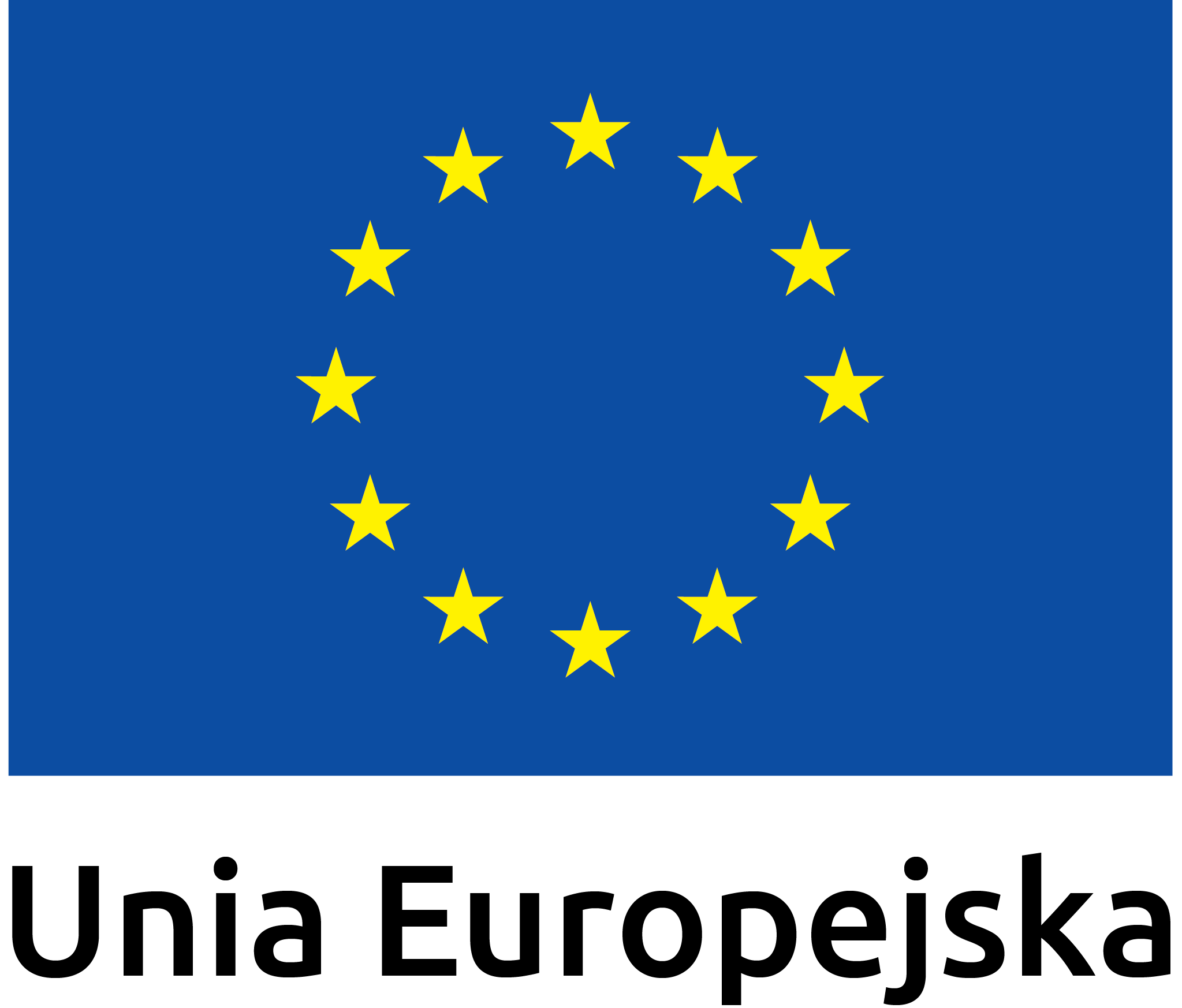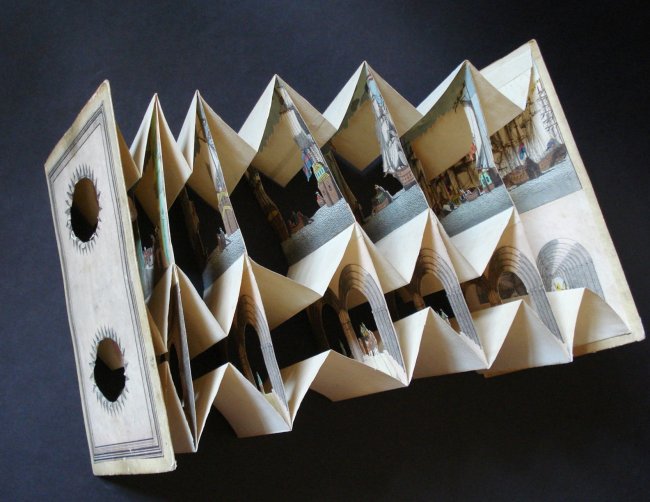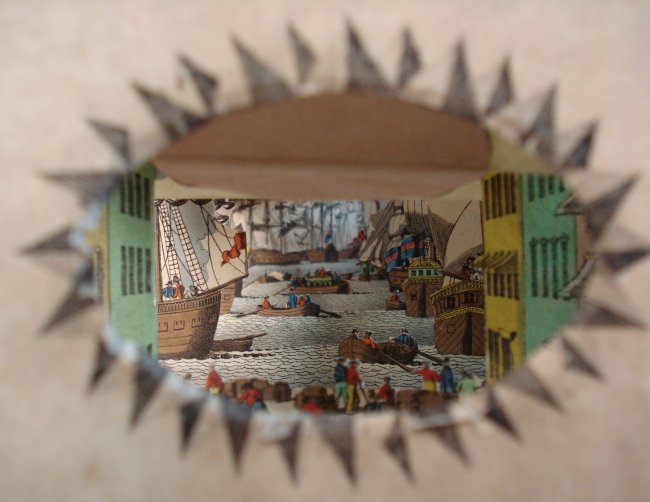Object
Optical paper fold
Information
Inventory no
MNS/3609/S
Department
Art Department
Technique
Printing
Material
Cardboard, paper
Copyright classification
https://pl.wikipedia.org/wiki/Domena_publiczna
Description
The collection of the Museum includes an optical compilation made around 1835 in Germany. After unfolding, it has the shape of a two-level accordion with five colored cut out pictures placed in each level, creating a three-dimensional effect.
Compilations of this type were extremely popular in the mid-nineteenth century, at a time when optical devices were in vogue. Their originator is considered to be the German copper engraver Martin Engelbracht, who in the 1730s made miniature, paper, cut-out theatres, made of cardboard boxes stacked one after the other, creating a perspective image. The fad for optical folds started in Austria and Germany, but quickly spread to England and France. They were produced cheaply and then sold as souvenirs in popular tourist spots. Among the topics presented on the compilations, two loud and attractive events from around the mid-19th century were very popular. 19th century: construction of a tunnel under the Thames and the Great Exhibition near London in 1851 with the construction of Chrystal Palace. The compilation from the Nowy Sącz museum shows the first event. In the top picture we see ships on the Thames, and in the bottom picture there is a tunnel running under the river, through which people walk and carriages pass.
Prepared by: Edyta Ross-Pazdyk



